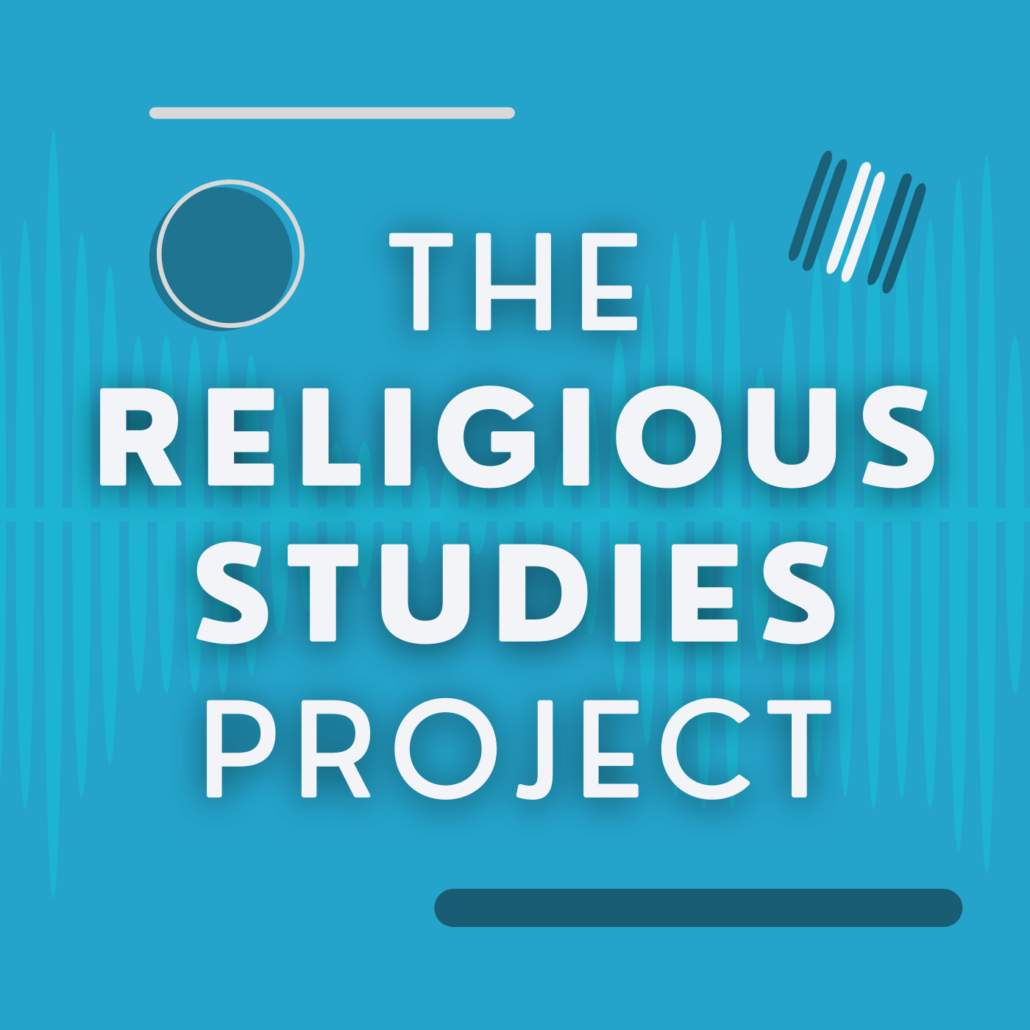A Response to Callum Brown: Connecting “When” and “Why” in Digital Religion
By Tim Hutchings, Durham University
Published by the Religious Studies Project, on 4 May 2012 in response to the Religious Studies Project Interview with Callum Brown on Historical Approaches to (Losing) Religion (30 April 2012). For a more ‘informal’ response, you can listen to our roundtable discussion session on the question Can We Trust the Social Sciences?.
In his new podcast for the Religious Studies Project, Callum Brown has given us an excellent introduction to the historical approach to the study of religion. In conversation with Christopher Cotter, Brown outlines rival traditions within the history of religion and demonstrates what each has contributed to our understanding of secularisation. Along the way, Brown summarises his research career and offers some tantalising hints about his current interview-based study of the life stories of people who have left religion. He also emphasises the value of demographics, arguing that sophisticated analyses of census data reveal that people develop ‘an entirely new sense of self’ when they leave religion. This is a fascinating and challenging claim, but I have chosen to focus in this response on another of the main themes of this podcast: the relationship between history and sociology.
At the end of this interview, Brown distinguishes the history of religion sharply from sociology. According to Brown, there is a “huge gap” in method, approach and interests between the two disciplines. Sociologists, he argues, believe that the world is governed by rules. They undertake research to study the contemporary religious landscape, interpret this snapshot in time by framing it within a particular model of fixed, linear change, and then make predictions about the future. Historians, on the other hand, believe that nothing is inevitable and assume that “when” must be the first step in working out “why”. Instead of collecting snapshots, historians map change year-on-year, using that longitudinal data to establish the effects of key events.
My own field of research is digital religion, an area with a particularly troubled relationship to history. Scholars and commentators interested in digital culture and its significance for religion have struggled to distinguish what is truly new from what has come before, and continue to search for helpful ways to talk about change.
One classic strategy since the 1990s has been to contrast an anecdotal snapshot of contemporary life against visions of the near future and the recent past. In the most common forms of this argument, the past is characterised by stable local communities, face-to-face relationships and a secure, unchanging personal identity. Contemporary digital technology challenges this stability by supporting fluid, self-determined, global communication networks, so the argument goes, and these changes will intensify in the near future. Different observers have interpreted this same basic approach in positive, neutral and negative ways, seeing technology as the route to new spiritual awareness (Cobb 1998), a powerful tool that can be used to promote an unchanging religious message to the new mission field of digital culture (Estes 2009, Sweet 2012), or a dangerous threat to church, character and society. Sherry Turkle’s recent declaration that social media is facilitating a “flight from conversation” is a good example of this third type (2012). Young people now use their phones a lot, she argues, and they previously spent time face-to-face, and this shift is very bad for everyone. Her argument is simple and intuitively appealing, contrasting a recognisable snapshot of everyday life with a widely-accepted vision of the recent past and calling for immediate action to rescue the future, and her article has provoked much discussion online in recent weeks.
Scholars of media and religion have tried to challenge this approach over the last decade by framing their observations within a more rigorous historical perspective. The forms of religious community observed online are not unique after all, they argue: they actually continue long-running trajectories of social change from groups to networks (Wellman 2012) or from stable to fluid religious identities (Wagner 2012). Heidi Campbell’s recent work (2010) focuses on the power of religious groups to construct and interpret the technology they use, a process that includes engagement with group history. For Campbell, contemporary religious uses of the internet must be interpreted in the context of the theology and values of particular communities, including how those communities have changed their approach to media over time. Many other scholars have tried to complicate popular understandings of the past and present of media religion, undertaking detailed comparative studies to show that religious authority, community and identity have not changed in the ways some observers allege.
Listening to Callum Brown’s interview, it becomes clear that all of these scholarly approaches represent a distinctively sociological way of using history. These scholars analyse the past to identify long-term trajectories in social or religious change and use that model to interpret the present. “When” questions are rarely considered: the purpose of the exercise is to establish a tension between a stable (or predictably-changing) past and a snapshot of the present, to generate insights into continuity and change.
There is clear scope here for inter-disciplinary collaboration. Sociological interest in the history of religion and media has generated a space for interventions by historians, who can greatly benefit the study of digital culture by offering detailed critiques of our assumed trajectories of change. Recent examples include Jeremy Stolow’s keynote speech on the spirituality of the telegraph, delivered to the Digital Religion conference in Colorado earlier this year (see Stolow 2011), and Stefan Gelfgren’s work (2012) on the history of religious attitudes to media. Sociologists of digital religion are still not as interested in the connection between “when” and “why” as Callum Brown might like, but clear progress is being made to forge connections with historians. This podcast is an excellent provocation to think harder about the questions we overlook and the interdisciplinary conversations that might help us uncover them.
This material is disseminated under a Creative Commons Attribution-NonCommercial-NoDerivs 3.0 Unported License. and can be distributed and utilised freely, provided full citation is given.
About the Author
 Tim Hutchings recently completed a postdoctoral fellowship at the HUMlab digital humanities centre in Umeå, Sweden and has now returned to the UK to join the CODEC research initiative at St John’s College, Durham. Tim is currently working with CODEC to develop a series of digital art exhibitions and installations in response to the Lindisfarne Gospels. His PhD thesis (Durham University, 2010) was an ethnographic study of five online Christian churches, focusing on the relationship between online and offline religion. Research interests include e-vangelism, online Christian storytelling, the future of the Bible as a digital sacred text and the role of new media in death and mourning.
Tim Hutchings recently completed a postdoctoral fellowship at the HUMlab digital humanities centre in Umeå, Sweden and has now returned to the UK to join the CODEC research initiative at St John’s College, Durham. Tim is currently working with CODEC to develop a series of digital art exhibitions and installations in response to the Lindisfarne Gospels. His PhD thesis (Durham University, 2010) was an ethnographic study of five online Christian churches, focusing on the relationship between online and offline religion. Research interests include e-vangelism, online Christian storytelling, the future of the Bible as a digital sacred text and the role of new media in death and mourning.
Bibliography
Campbell, Heidi. When Religion Meets New Media. Abingdon: Routledge, 2010.
Cobb, Jennifer. CyberGrace: The Search for God in the Digital World. New York: Crown, 1998.
Estes, Douglas. SimChurch: Being the Church in the Virtual World. Grand Rapids: Zondervan, 2009.
Gelfgren, Stefan. “Let there be digital networks and God will provide growth?” Comparing the aims and hopes of 19th-century and post-millenial Christianity. In Pauline Hope Cheong, Peter Fischer-Nielsen, Stefan Gelfgren and Charles Ess (eds.), Digital Religion, Social Media and Culture: Perspectives, Practices and Futures. New York: Peter Lang, 2012. p. 227-242.
Hogan, Bernie and Barry Wellman. The immanent internet redux. In Pauline Hope Cheong, Peter Fischer-Nielsen, Stefan Gelfgren and Charles Ess (eds.), Digital Religion, Social Media and Culture: Perspectives, Practices and Futures. New York: Peter Lang, 2012. p. 43-62.
Stolow, Jeremy. ‘Telegraph’, in freq.uenci.es: a collaborative genealogy of spirituality. September 7 2011. Available online: http://freq.uenci.es/2011/09/07/telegraph/. Accessed May 2 2012.
Sweet, Leonard. Viral: How Social Networking is Poised to Ignite Revival. Colorado Springs: Waterbrook, 2012.
Turkle, Sherry. The flight from conversation. New York Times, April 21 2012. Available online: http://www.nytimes.com/2012/04/22/opinion/sunday/the-flight-from-conversation.html. Accessed May 2 2012.
Wagner, Rachel. Godwired: Religion, Ritual and Virtual Reality. Abingdon: Routledge, 2012.



